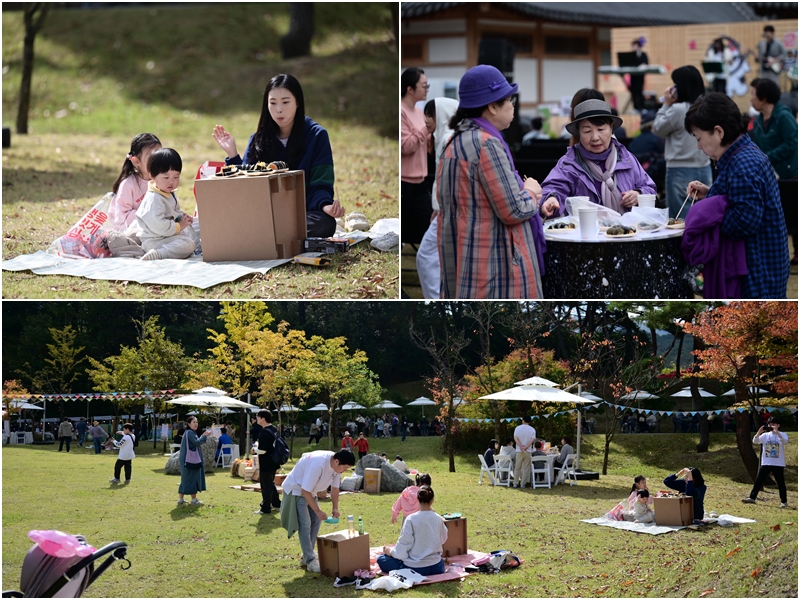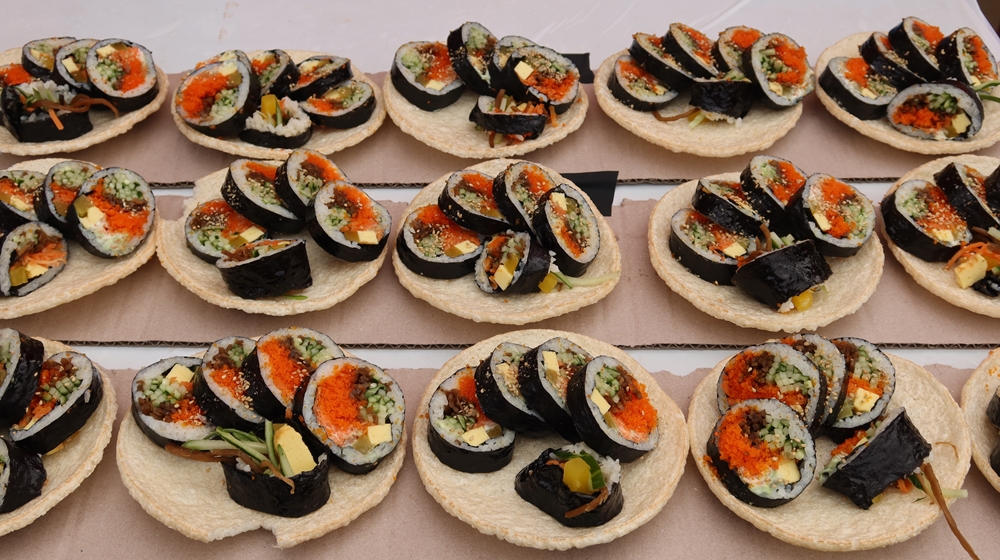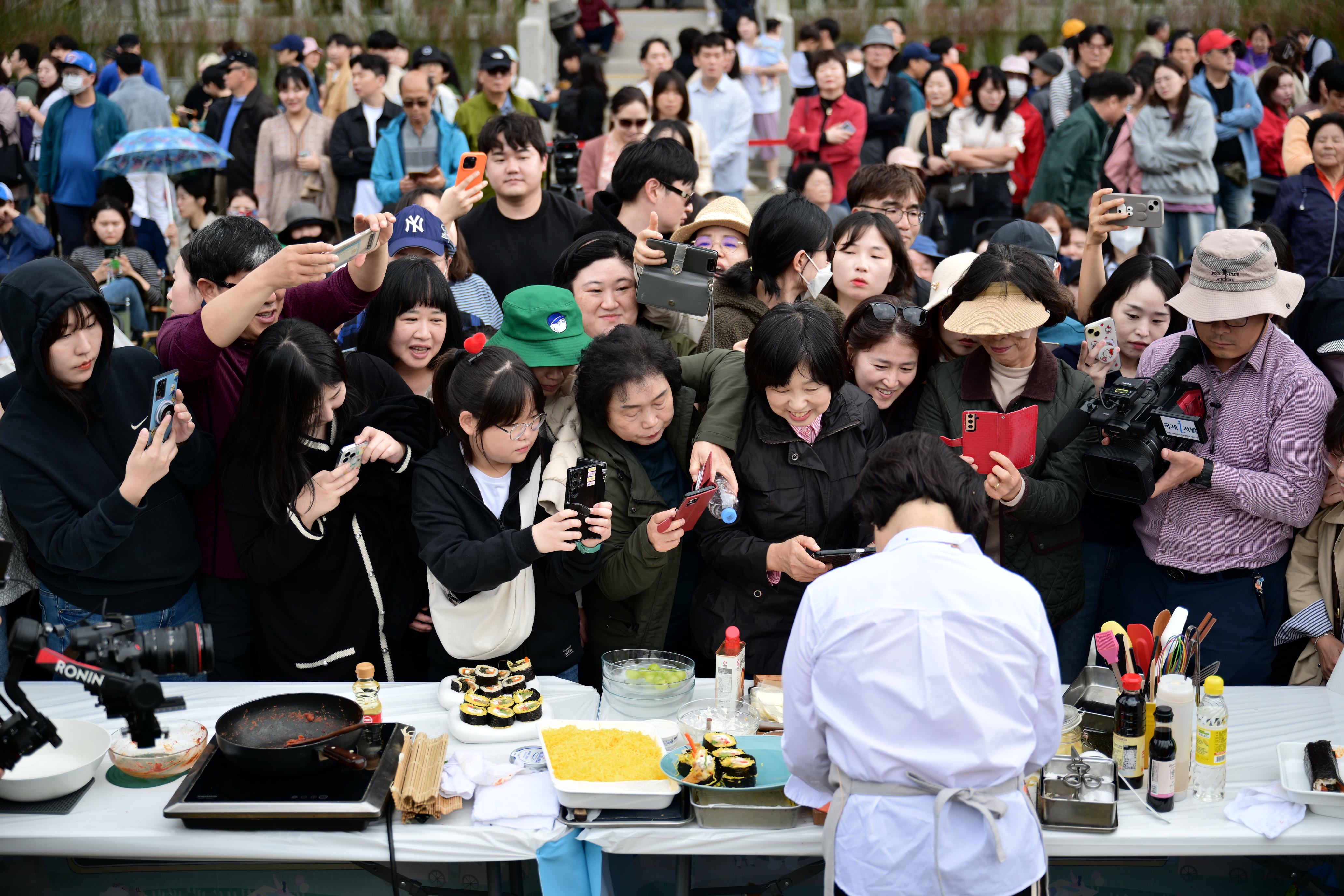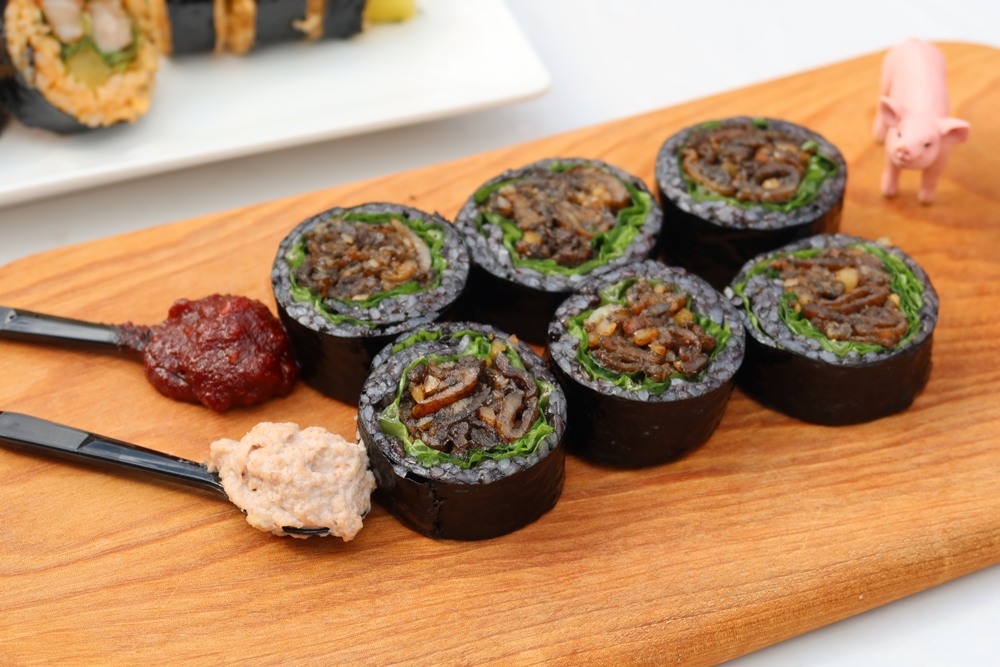Information Center
- Main page
- Information Center
- Government News
Government News
- Source
- KOREA.net
- Date
- 2024.11.06

Visitors to the Gimcheon Gimbap Festival from Oct. 26-27 hold picnics at Samyeongdaesa Park in Gimcheon, Gyeongsangbuk-do Province. (Festival's secretariat)
By Charles Audouin
On a nice fall day on Oct. 26, Samyeongdaesa Park in Gimcheon, Gyeongsangbuk-do Province, was filled with people on picnics.
Gimbap (seaweed rice roll) is a staple on occasions like a picnic or school sport festival because its portability and filling nature suits daily life in Korea. The global popularity of the food has risen thanks to its reputation as a healthy food using a harmonius mix of ingredients.

The Gimcheon Gimbap Festival used puffed rice as plates to be consumed as dessert after the gimbap on them was eaten, thus reducing waste. (Charles Audouin)
Korea.net covered the inaugural Gimcheon Gimbap Festival from Oct. 26-27 to find out why Gimcheon, which is more famous for walnuts, plums and grapes, hosted such an event.
The city said its survey on what image the public thinks of most when thinking of Gimcheon was the budget chain restaurant Gimbap Cheonguk (Heaven), whose abridged name is "Gimcheon," the city's name. The intent was to promote a new regional image through the food.

Visitors to the Gimcheon Gimbap Festival on Oct. 26 take photos of culinary researcher and celebrity chef Lee Hye-jung preparing gimbap. (Festival's secretariat)
The gimbap zone at the festival featured unique versions such as those with plums, walnuts, black pork and gochujangmul, or chili pepper paste mixed with anchovy and water, as ingredients. Varieties rolled by monks at the nearby Buddhist temple of Jikjisa were immensely popular that they attracted long lines.
Many booths offered the experience of making and eating a variety of gimbap, and those selling food going well with it such as tteokbokki (spicy rice cake), sundae (blood sausage), fried food and ramyeon (instant noodles) were also popular.
The Gimcheon Gimbap Cooking Festival also showcased a myriad of versions of gimbap using specialty ingredients from the city. The 10 competing teams advanced through first round of expert screening and battled in the final on Oct. 26 at the festival.
Each team made its own version of gimbap under a new interpretation of the food. The judges made their assessments based on hygiene, completion, taste, nutrition and creativity and named the top prize winners.

This is the "Osami" gimbap entry that won the Gimcheon Gimbap Cooking Competition. (Charles Audouin)
The grand first prize went to the entry "Osami" gimbap, made with squid ink, black rice, and the Gimcheon specialties of jirye black pork and walnuts. To be eaten with a rich white sauce made with tofu and gochujang (spicy red pepper paste), this version will be sold from this month at the national convenience store chain CU.
The table below contains the ratings of the festival by Korea.net:

caudouin@korea.kr